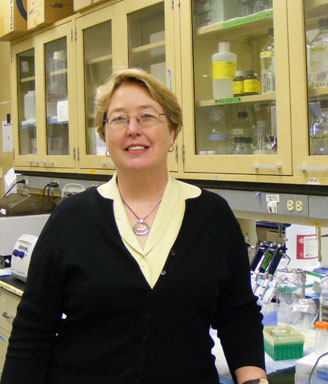Catalytic Function and Substrate Specificity of the PLpro Domain of nsp3 from the Middle East Respiratory Syndrome Coronavirus (MERS-CoV) Journal Article
Local Library Link: Find It @ Loyola
| Authors: | Baez-Santos, Y. M.; Mielech, A. M.; Deng, X; Baker, S.; Mesecar, A. D. |
| Article Title: | Catalytic Function and Substrate Specificity of the PLpro Domain of nsp3 from the Middle East Respiratory Syndrome Coronavirus (MERS-CoV) |
| Abstract: | The papain-like protease (PLpro) domain from the deadly Middle East Respiratory Syndrome coronavirus (MERS-CoV) was over-expressed and purified. MERS-CoV PLpro constructs with or without the putative ubiquitin-like (UBL) domain at the N-terminus were found to possess protease, deubiquitinating, deISGylating, and interferon antagonism activities in transfected HEK293T cells. The quaternary structure and substrate preferences of MERS-CoV PLpro were determined and compared to those of SARS-CoV PLpro, revealing prominent differences between these closely related enzymes. Steady-state kinetic analyses of purified MERS-CoV and SARS-CoV PLpros uncover significant differences in their rates of hydrolysis of 5-aminomethyl coumarin (AMC) from C-terminally labeled peptide, ubiquitin and ISG15 substrates, as well as in their rates of isopeptide bond cleavage of K48- and K63-linked polyubiquitin chains. MERS-CoV PLpro was found to have an 8-fold and 3,500-fold higher catalytic efficiency for hydrolysis of the ISG15-AMC over the Ub-AMC and Z-RLRGG-AMC substrates respectively. A similar trend is observed for SARS-CoV PLpro although it is much more efficient than MERS-CoV PLpro towards ISG15-AMC and peptide-AMC substrates. MERS-CoV PLpro was found to process K48- and K63-linked polyubiquitin chains with similar rates and debranching patterns producing monoubiquitin species. However, SARS-CoV PLpro much prefers K48-linked polyubiquitin chains to K63-linked chains, and it rapidly produces di-ubiquitin molecules from K48-linked chains. Finally, potent inhibitors of SARS-CoV PLpro were found to have no effect on MERS-CoV PLpro. A homology model of MERS-CoV PLpro structure was generated and compared to the X-ray structure of SARS-CoV PLpro to provide plausible explanations for differences in substrate and inhibitor recognition. IMPORTANCE: Unlocking the secrets of how coronavirus (CoV) papain-like proteases (PLpros) perform their multifunctional roles during viral replication entails a complete mechanistic understanding of their substrate recognition and enzymatic activities. We show that the PLpro domains from the MERS and SARS coronaviruses can recognize and process the same substrates but with different catalytic efficiencies. The differences in substrate recognition between these closely related PLpros suggest that neither enzyme can be used as a generalized model to explain the kinetic behavior of all CoV PLpros. As a consequence, decoding the mechanisms of PLpro-mediated antagonism of the host innate immune response and the development of anit-CoV PLpro enzyme inhibitors will be a challenging undertaking. The results from this study provide valuable information for understanding how MERS-CoV PLpro-mediated antagonism of the host innate immune response is orchestrated and insight into the design of inhibitors against MERS-CoV PLpro./Background. |
| Journal Title: | Journal of virology |
| Volume: | 88 |
| Issue: | 21 |
| ISSN: | 1098-5514; 0022-538X |
| Publisher: | American Society for Microbiology. All Rights Reserved |
| Date Published: | 2014 |
| Start Page: | 12511 |
| End Page: | 12527 |
| Language: | ENG |
| DOI/URL: |
JVI.01294-14 |
| Notes: | LR: 20150501; CI: Copyright (c) 2014; GR: AI085089/AI/NIAID NIH HHS/United States; GR: P30 CA023168/CA/NCI NIH HHS/United States; GR: P30 CA023168/CA/NCI NIH HHS/United States; GR: R01 AI085089/AI/NIAID NIH HHS/United States; JID: 0113724; 0 (Nsp3 protein, Middle East respiratory syndrome coronavirus); 0 (Recombinant Proteins); 0 (Viral Nonstructural Proteins); EC 2.7.7.48 (RNA Replicase); EC 2.7.7.48 (nonstructural protein 3, SARS coronovirus); EC 3.4.- (Peptide Hydrolases); OID: NLM: PMC4248884; 2014/08/20 [aheadofprint]; ppublish |


